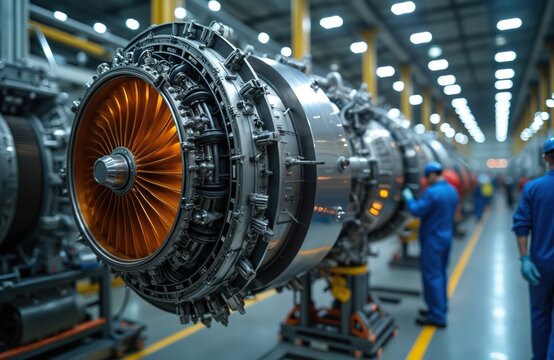A Turning Point in Defence Strategy: Fighter Jet Engine Deal with France
India’s defence strategy today stands at a decisive turning point. On the occasion of Independence Day, Prime Minister Narendra Modi, from the ramparts of the Red Fort, declared: “India will become self-reliant and build its own fifth-generation fighter aircraft.” This statement is not merely political rhetoric; it is a clear reflection of India’s rising confidence in its global strategic stature. In this very context, the Indo-French agreement to jointly manufacture fifth-generation fighter jet engines is set to deeply influence the future of defence equations.
India’s Journey Towards Self-Reliance
India has long recognized that dependence on foreign powers in the defence sector weakens its strategic autonomy.
- During the Kargil War, the U.S. refusal to share GPS data compelled India to develop its indigenous navigation system (IRNSS).
- In the Tejas fighter jet programme, repeated delays in the delivery of American GE-414 engines highlighted the urgency of developing indigenous engine technology.
- The “Make in India” initiative has prioritized defence manufacturing, with a clear goal of reducing imports and positioning India as a future exporter.
France: A Trusted Partner
Strains in U.S.-India relations and uncertainties in arms deals pushed India to seek alternatives. France emerged as a “reliable friend.”
- French aerospace company Safran, manufacturer of the Rafale’s M88 engine, has agreed to 100% technology transfer to India for engine manufacturing.
- This step is not just defence cooperation but also a symbol of strategic trust.
- For France, still unsettled after the AUKUS agreement (which cost it the Australian submarine deal), this partnership offers a chance to directly counter U.S. dominance.
U.S.–France Rivalry and India’s Position
The global fighter jet market has long been dominated by rivalry between the American F-35 and the French Rafale.
- India’s refusal to procure the F-35 dealt a blow to U.S. expectations.
- Following the cancellation of France’s submarine deal with Australia under AUKUS, Paris sought an opportunity to challenge Washington—and found one in India.
- Thus, India’s tilt towards France is more than a defence technology choice; it is also a diplomatic signal in favor of a multipolar world order.
Strategic Implications
The Indo-French defence collaboration carries wide-ranging consequences:
- India’s Self-Reliance – Developing advanced stealth capabilities and a fifth-generation engine will make India strategically autonomous in defence.
- France’s Global Standing – By directly challenging U.S. dominance, France aims to re-establish its industrial and diplomatic influence.
- A Challenge for the U.S. – India, both as a major market and strategic partner, leaning towards France will directly impact America’s Indo-Pacific strategy.
- Global Power Balance – This cooperation will strengthen multipolarity in the Asia-Pacific, with India emerging not merely as a market but also as a manufacturer and exporter.
The Indo-French fighter engine agreement is not just a defence deal—it is a step that could reshape 21st-century geopolitical equations. It marks a historic milestone in India’s journey towards self-reliance, while giving France an opportunity to reinforce its role in Asia, free from American constraints.
Today’s India is no longer a nation dependent on others. It is a nation rising on its own strength—self-reliant, confident, and ready to claim its rightful place on the global stage.












